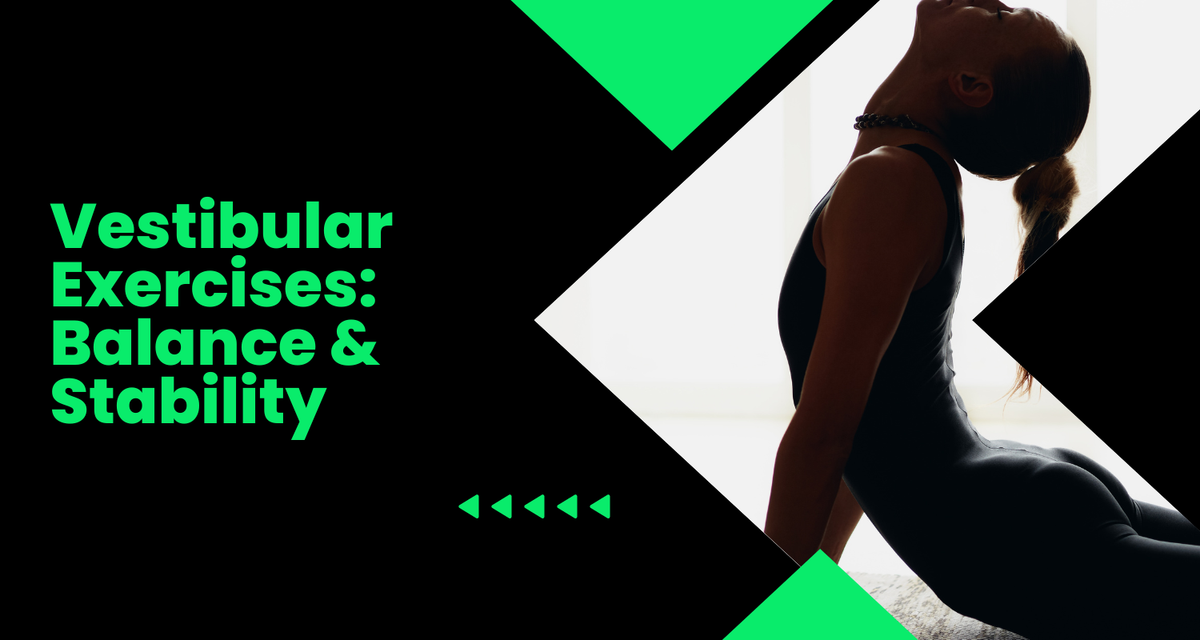Vestibular Exercises: Enhancing Balance and Stability for Optimal Health

The vestibular system, located within the inner ear, plays a crucial role in maintaining balance, spatial orientation, and coordination.
Vestibular exercises are designed to stimulate and strengthen this system, helping individuals improve balance, reduce dizziness, and enhance overall stability.
In this article, we'll explore a variety of effective vestibular exercises to promote better balance and stability for optimal health and well-being.
Understanding the Vestibular System
The vestibular system consists of fluid-filled canals and chambers located in the inner ear, along with sensory receptors that detect head movements and changes in position.
This system works in conjunction with visual and proprioceptive inputs to provide feedback to the brain about the body's position and movement in space.
Dysfunction or impairment of the vestibular system can lead to symptoms such as dizziness, vertigo, and loss of balance.
Benefits of Vestibular Exercises
Vestibular exercises offer numerous benefits for individuals of all ages and fitness levels:
- Improved Balance: By stimulating the vestibular system, these exercises help improve balance and stability, reducing the risk of falls and injuries.
- Reduced Dizziness: Regular vestibular exercises can help alleviate symptoms of dizziness and vertigo, promoting a greater sense of well-being and confidence.
- Enhanced Coordination: These exercises challenge coordination and spatial awareness, helping individuals become more adept at navigating their environment.
- Prevention of Motion Sickness: Vestibular exercises can desensitize the vestibular system to motion, reducing susceptibility to motion sickness during travel or activities.
Effective Vestibular Exercises
1. Gaze Stabilization Exercises
- Focus on a stationary object while moving your head side to side, up and down, and in circular motions.
- Progress to more challenging exercises, such as tracking a moving object or performing head movements with your eyes closed.
2. Balance Board Exercises
- Stand on a balance board or wobble board with your feet hip-width apart.
- Maintain your balance while performing various movements, such as shifting your weight from side to side, forward and backward, and in circular motions.
- Start with small movements and gradually increase the intensity and duration as your balance improves.
3. Tai Chi
- Tai Chi is a gentle form of exercise that combines flowing movements, deep breathing, and mindfulness.
- Practice Tai Chi movements that involve shifting your weight, rotating your body, and maintaining a steady stance, all of which help improve balance and stability.
4. Yoga
- Yoga poses that focus on balance, such as Tree Pose, Warrior III, and Eagle Pose, can help strengthen the vestibular system and improve overall stability.
- Start with beginner-level poses and gradually progress to more advanced variations as your balance improves.
5. Head Movement Exercises
- Perform slow and controlled head movements in different directions, including side bending, forward bending, and rotation.
- Focus on maintaining your balance and coordination while performing these movements.
Precautions and Considerations
- Start slowly and gradually increase the intensity and duration of vestibular exercises to avoid overexertion.
- If you have a history of vertigo or vestibular dysfunction, consult with a healthcare professional before starting any new exercise program.
- Stop any exercise that causes dizziness, nausea, or discomfort, and seek guidance from a medical professional if symptoms persist.
Conclusion
Vestibular exercises are an essential component of balance training and fall prevention, helping individuals of all ages maintain stability and confidence in their daily activities.
By incorporating exercises that stimulate the vestibular system, such as gaze stabilization exercises, balance board exercises, Tai Chi, yoga, and head movement exercises, individuals can enhance their balance, reduce dizziness, and improve overall quality of life.
Remember to start slowly, listen to your body, and consult with a healthcare professional if you have any concerns or medical conditions.
